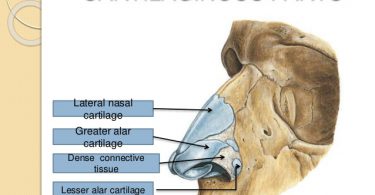Case Study
This is a case of 52 years female suffering from Rheumatic Valvular Heart Disease with Severe Mitral stenosis i.e. 0.7 cm2 along with H/O systemic embolism.
Her reports on 18th Dec 2004 were:
- Rheumatic valvular heart disease.
- Critical mitral stenosis. MVA 0.7 sqcm.
- Grade IV mitral regurgitation.
- Tiny thrombosis in left atrial appendage.
- Moderate PH.
This patient had (Lt) atrial thrombosis & systemic thromboembolism which is the cause of 25% deaths in this condition.
She was diagnosed as R.H.D. since 2002. As her condition was critical, she was advised initially for the mitral balloon valvuloplasty, but afterwards her consultant cardiologist also refused for surgery as she had (Lt) atrial thrombosis (because of that she had H/O unconsciousness for 9-10 times in past.) which was crucial and he didn’t want to take risk. She was advised to continue with medicines only. So, the patient & her relatives gave up all the hopes of getting cured.
Severe mitral stenosis occurs when the opening is reduced to 1 cm2. At this stage, a mean LAP of 25 mm Hg is required to maintain a normal cardiac output. With progressive stenosis, critical flow restriction reduces left ventricular preload and output. The increase in LAP also enlarges the left atrium and raises pulmonary vascular pressures. The resulting pulmonary congestion and reduced cardiac output can mimic primary left ventricular failure. As the disease evolves, chronic elevation of the LAP eventually leads to pulmonary hypertension, tricuspid and pulmonary valve incompetence, and secondary right heart failure.
The mitral valve orifice is normally about 4 cm2 in diastole.
Thromboembolism — Frequent complication of mitral stenosis with an embolic event, most commonly cerebral.
Most emboli originate from the left atrium. The most common site for embolism from this site is the cerebral circulation, but any organ may be involved, especially spleen, kidneys, and the coronary circulation, resulting in a myocardial infarction. Emboli can also arise from the right atrium when there is pulmonary hypertension and right ventricular and atrial dilatation. Emboli from this site lead to pulmonary embolism and infarction.
When she came, her complaints were :
1. C/O vertigo: 4-5 years.
– C/O unconsciousness along with vertigo.
– Vertigo along with vomiting, sweating & weakness of extremities with tendency to fall on (Rt) side.
– C/O diplopia during vertigo.
– Foggy vision in front of eyes with whirling of all objects around her. Trembling all over the body.
– Profuse sweating all over the body especially on face & head during the attack of vertigo.
– > Lying on sides.
2. Breathlessness with violent palpitations on & off.
< ascending stairs.
3. Chronic acidity: 25 years.
Burning sensation from stomach to throat.
< Oily > Induced vomiting.
< Spicy > Walking.
< Loss of sleep.
< Daytime
Past History
She had past history of tremors in childhood.
Physical Generals
Diet : Vegetarian.
Appetite : Good.
Desire : Pungent++ / Milk++ / Tea++
Aversion : Ghee / Salt.
Food < : Banana, Ghee < Eructation.
Thirst : Thirst for large quantity of water at small intervals.
Tongue : Pale, dry & slightly fissured.
Perspiration: Moderate in general. Profuse during . vertigo.
Sleep : 11 p.m. – 6 am. Lies on sides.
> Hard bed++
Habit : Tobacco chewing
Thermally : Chilly patient, yet bath with cold water.
Mind
- Tell me about your childhood?
I was born & brought up in a small village with poor economical condition. My family comprises of 4 brothers & 2 sisters & I am 2nd amongst them.
When I was a child, I was obstinate & irritable. Whenever anybody scolded me, I expressed my anger by keeping quiet & not talking to that person.
Even I refused food for the same reason. Though I fought with my siblings, I took care of them.
I was not interested in studies & was poor in maths.
- Tell me about your nature ?
She couldn’t make out soon, so her son started, “she is very irritable, can’t tolerate contradiction & weeps when gets angry but won’t express her anger.
She is very much attached to her family & constantly worried about the family members. She helps her daughter in laws in household work in spite of her ill-health. But she can’t handle financial transactions.”
In between, the patient said, “Since beginning, I had an interest in household work like cleaning my house, cooking, etc. I enjoy being engaged in work rather than sitting idle.”
- How is your relationship with your family members?
She has 3 sons & 2 of them are married.
She said, “I have a good relationship with all my family members … she took a pause & said, except my brother” & kept quiet.
(She was nervous at that time)
Her son interfered by saying, she had some disturbed relation with her brother since 3 years, because of some conflicts.”
- What resulted into a conflict?
Her son replied, “My uncle suggested a proposal for my marriage. As I was not interested in that, my mom rejected it which hurted him. This matter has brought a distance between my uncle & our family. This in turn made my mother feel sad & I am observing that her complaints started since that time.”
As per my observation :
– Slowness of talking.
– Family oriented.
– Suppressed anger
– Forgetfulness.
Totality
– Miasm – Syphilitic.
– Weakness of memory with unfitness for intellectual labour.
– Chilly patient, yet bath with cold water.
– A/F: Forsaken feeling by beloved ones.
– Anger and Vexation.
– Vertigo with sensation as if all objects are moving around with vomiting & fatigue.
– Diplopia after vertigo.
– Acidity with burning sensation from stomach to throat.
– Tobacco desire.
– Breathlessness < ascending stairs.
– Aversion to salt.
– Pungent desire
– Violent palpitation of heart.
– Family oriented.
– > Lying on sides.
– > Hard bed.
– Anxiety others.
– Weeps easily.
– Industrious.
– Suppressed anger.
Remedy Selected
Sepia 30
Response
She was admitted in my hospital after her case study.
Day by day her breathlessness & palpitation which she had earlier, got reduced. She was under my observation for 21 days & there were no episodes of unconsciousness or vertigo.
About 15 days after, she complained of both knee joint pains (mild) which shifted to ankle joints & lasted for 5-6 days. Later on pain reduced. This shows Hering’s law i.e. – cure taking place from
– Above downwards.
– From within outwards.
– From more imp. organ to less imp. organ.
Afterwards her 2 D-Echo was done which showed good improvement.
There was no evidence of thrombosis as present in previous report.
10/03/2005 : 2 D-Echo Report :
– Moderate Mitral Stenosis MVA = 1.25 cm2
– Mild Mitral Regurgitation.
– Mild Pulmonary Hypertension.
Her Cardiologist had doubt on her drastic recovery. So they advised her to go for Trans Oesophageal Echo Cardiography which showed the reports as follows :
17/03/2005 : Transoesophageal Echocardiogram :
– The findings of TEE confirmed.
– Rheumatic Mitral valve affection.
– Moderate MS (MVA = 1.4 cm2) and mild MR.
– Mild PAH (PASP = 40mm Hg).
– No intracardiac clots or vegetation.
– Intact septae.
– Good ventricular contractility.
– sinus rhythm now.
Till date she is in her best spirits, enjoying her life to the fullest
D/D: Common symptoms of both remedies are
– Suppressed anger
– Desire tobacco
The differentiating features include the following:
Sepia
- Requires bath with cold water-though chilly.
- Forsaken feeling by beloved ones.
- Pungent desire.
- > Hard bed.
- Centralised action
Staph
- Bath with hot water.
- Sensitive to creticism.
- Pungent desire is not marked.
- > Hard bed is not marked.
- Rt to Lt symptoms.





